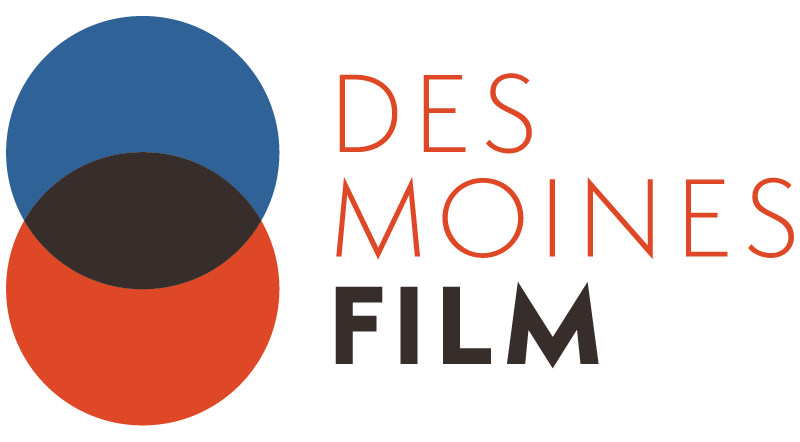
There’s More to Kurosawa Than Samurai Films
Recently, thanks to Turner Classic Movies (and my DVR), along with an assist from the Des Moines Public Library, I was able to view several films by Akira Kurosawa for the first time. Not only is Kurosawa in the group of Japanese directors known as The Big Three (along with Kenji Mizoguchi and Yasujirô Ozu) he is, without question, in the international pantheon of the greatest filmmakers of all time. Known primarily for his talent as the director of thirty-one feature films, Kurosawa wrote or co-wrote the screenplays for all of his movies (as well as many others), and edited and/or produced many of his own projects. In a word, he is a quintessential example of a “consummate” filmmaker. After adding four more titles to the list of Kurosawa films that I’ve seen (for a grand total of thirteen), two things stand out to me. One, I’m still a far cry from claiming that I’m an actual Kurosawa expert – though thirteen seems a pretty substantial number of titles to have seen made by a filmmaker working in a language foreign to my own – and two, considering the number of classic Kurosawa titles that continue to elude me, I still have many to look forward to seeing!
OK, although I don’t lay claim to being a Kurosawa expert, it is true that I studied Japanese cinema in grad school and have seen several dozen movies from the Land of the Rising Sun since then, while continuing to study the subject from time to time. So at the very least, I have more than a passing interest in the subject, if not an actual facility in discussing it. When examining Japanese cinema, it’s difficult to not focus on Kurosawa (even nearly two decades after his passing) because his influence continues to be so enduring. One need only go to their favorite multiplex this fall to see that filmmakers continue to mine Kurosawa territory: directly in The Magnificent Seven, which was released in September, and indirectly in Rogue One: A Star Wars Story, which is set to hits screens on December 16. Perhaps that is a big part of the reason why Kurosawa continues to interest Western filmgoers; despite the fact that many of his works depict a Far East culture of the past, his ideas and characters seem to translate easily to Western settings (that is, in the sense of Western culture, as well as to the actual American West). A corollary being that even those works of Kurosawa that were set in feudal Japan, his so-called “samurai” films, appear more accessible to Western eyes than the works of Mizoguchi and Ozu, whether or not their films had historical or modern settings. Actually, there is so much more to Kurosawa than his samurai films, but I’ll get to that later.
While Mizoguchi and Ozu are still highly respected in their native country, they never came close to garnering the same level of international fame as Kurosawa, their slightly younger compatriot who greatly admired Hollywood filmmaking and was a major fan of American director John Ford. Although several of Kurosawa’s films received distribution in the West – at a time when foreign films, especially Japanese films, were seldom exhibited outside their own regions, I think that a solid case can be made for Kurosawa’s initial fame in the West being the result of his films serving as the basis for remakes and re-imaginings, as much as for the original films themselves, though the original films, of course, are truly deserving.
Several of Kurosawa’s most important works were soon co-opted by American and European filmmakers, some giving attribution, others not. All of them reset those samurai tales into different periods or locales, with some closely following the original story arc, while others only lifting specific scenes or particular characters. The first Kurosawa film to receive an English-language remake was Seven Samurai (1954), which was the basis for John Sturges’ 1960 blockbuster The Magnificent Seven, as well as being the inspiration for several other movies, a TV series, and the current remake. In 1964, Kurosawa’s first international success, Rashomon (1950), was remade by Martin Ritt as The Outrage. Also in 1964, Sergio Leone turned Yojimbo (1961) into A Fistful of Dollars – an Italian-produced, Spanish-shot, and, ultimately, English-dubbed mega-hit. Kurosawa’s The Hidden Fortress (1958) provided partial inspiration for George Lucas’s Star Wars (later retitled Star Wars: A New Hope), which was released in 1977 to massive success. I find it interesting that three of those four remakes weren’t just hits, but among the biggest money-earners of their times. Additionally, all four directors (two of them still very early in their careers at the time) would have lengthy and prestigious careers, proving the adage “if you’re going to steal, steal from the best.”
Speaking of which, Kurosawa was certainly not above stealing, or at least borrowing plots, from other sources himself, most notably from the plays of William Shakespeare. In Kurosawa’s hands Macbeth became Throne of Blood (1957), Hamlet was the inspiration for The Bad Sleep Well (1960), and King Lear was turned into Ran (1985). None of those three films are direct adaptations, certainly, but all clearly use the Bard’s plays as source material. Perhaps that’s why Western audiences were so receptive to those Kurosawa films, as the plots were already familiar to many viewers, even if they were cloaked in a Japanese sensibility.
With one exception, the Kurosawa titles that I’ve mentioned so far fall into the samurai category. The thing that bothers me most when discussing Kurosawa with other movie fans, in fact, is the standard perception that he only made samurai films, or that his samurai films are his only masterpieces. With that notion, I take great exception. It appears that many filmgoers are unaware that some of Kurosawa’s greatest works were set in contemporary times. Like director Vincent Minnelli – who is primarily remembered for his glossy MGM musicals, but whose many non-musicals are often stellar, as well – Kurosawa also has a wealth of titles that fall outside his most closely-associated genre.
Just as I haven’t seen some of Kurosawa’s notable samurai films, and so wouldn’t be qualified to recommend them, the same goes for his contemporary-set films, though to a lesser degree. In any case, I can heartily recommend the following six modern-era films as a step toward setting the record straight that Kurosawa’s prestigious filmmaking talent crossed over into other genres beyond his feudal-era titles. The following films, which are well worth seeking out, are listed from oldest to newest.
No Regrets for Our Youth (1946) – Filmed shortly after the end of World War II, No Regrets for Our Youth relates the story of a university professor, his daughter, and several of his students, all of whom protest the increasingly militaristic political regime of Japan in the 1930s and how that stance plays out tragically during the war. The film is particularly notable in that it focuses increasingly on the story of the daughter (played by Setsuko Hara), a rare instance of a female playing the de facto lead in a Kurosawa movie. The influence of Italian neorealism is often mentioned as being in evidence in the latter portion of this movie.
Stray Dog (1949) – Toshirô Mifune got one of his first great roles as a rookie homicide detective who loses his service revolver, which quickly gets passed along through a series of criminals, including a murderer. In his mission to recover the weapon, and save his job, the young detective gets a whirlwind tour of Tokyo’s underworld, which appears will get the best of him. Kurosawa clearly seems to have been watching American film noir thrillers prior to making this work.
Scandal (1950) – The world of tabloid journalism gets attacked in this story of an unknown painter (Mifune) who is quite accidentally photographed with a famous singer (Shirley Yamaguchi). When the tabloid starts making up additional copy and infringing on both subjects privacy, a lawsuit ensues. Scandal must be among the first anti-paparazzi movies ever made, yet it is still very relevant today.
Ikiru (1952) – Truly one of Kurosawa’s greatest films, Ikiru is a touching character study of a low-level bureaucrat (Takashi Shimura) who is diagnosed with terminal cancer. After some quick soul-searching, the man realizes how little he has accomplished in his decades of supposed public service. He then attempts to use his final months to see if he can actually make a positive difference in the lives of his constituents.
The Bad Sleep Well (1960) – A young businessman (Mifune) marries the boss’s daughter, not to ensure a bright future within the company, but to seek revenge against the men who were responsible for his father’s death. The real target of the film, however, is the rampant corruption that was part and parcel of Japan’s post-war economy at the highest levels of business. The opening wedding sequence rivals the famous ones found in The Godfather and The Deerhunter.
High and Low (1963) – Criminals kidnap a boy who they believe is the son of a high-ranking shoe company executive (yes, Mifune once again), but it turns out that the boy is actually the son of the executive’s chauffer. The opening third of the movie is a rather tense, but static study of the moral implications of the kidnapping, but that gives way to a first-rate police procedural – the script was based on the Ed McBain novel King’s Ransom – that briskly jumps from location to location for the rest of the film.
Kevin Kretschmer is a librarian at the Franklin Avenue Branch of the Des Moines Public Library. He has a B.A. in journalism from the University of Iowa, an M.A. in Film Studies, also from the University of Iowa, and an M.L.I.S. in Library and Information Studies from Dominican University.

